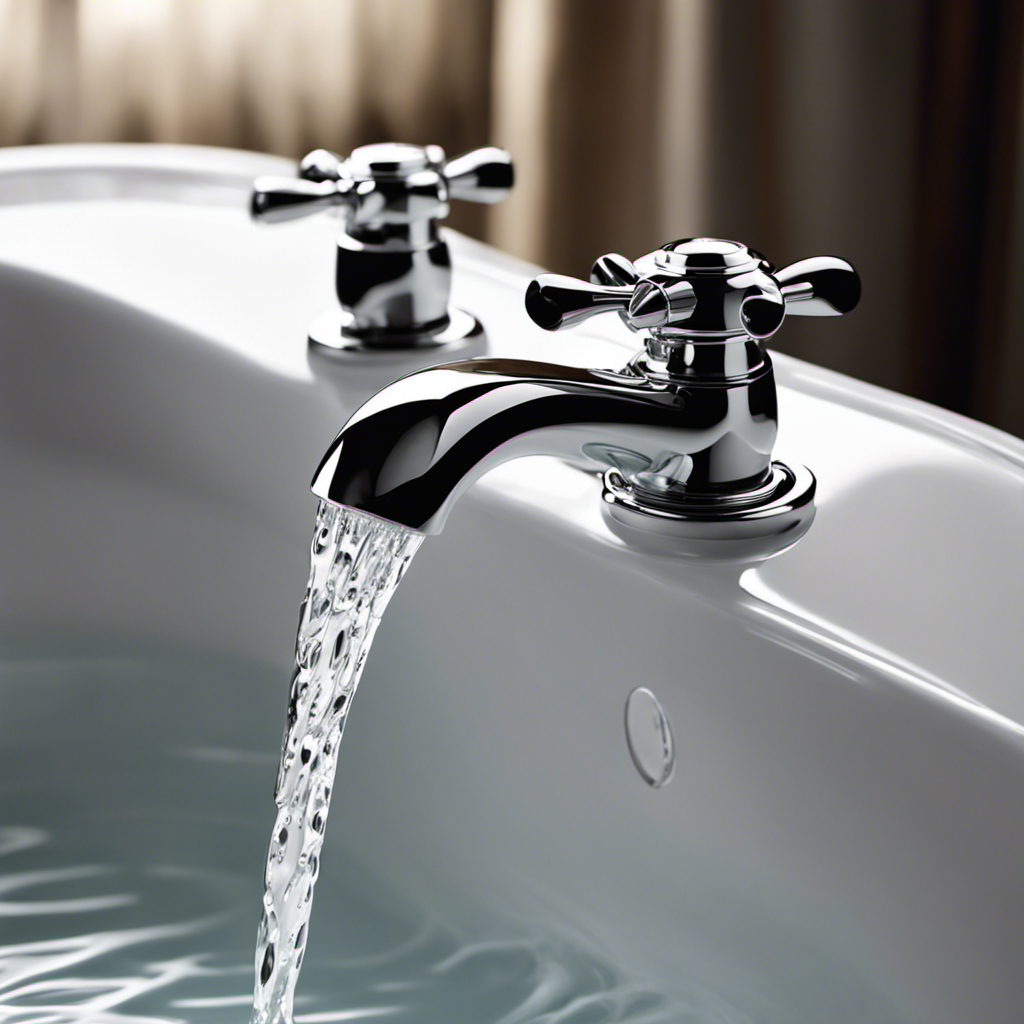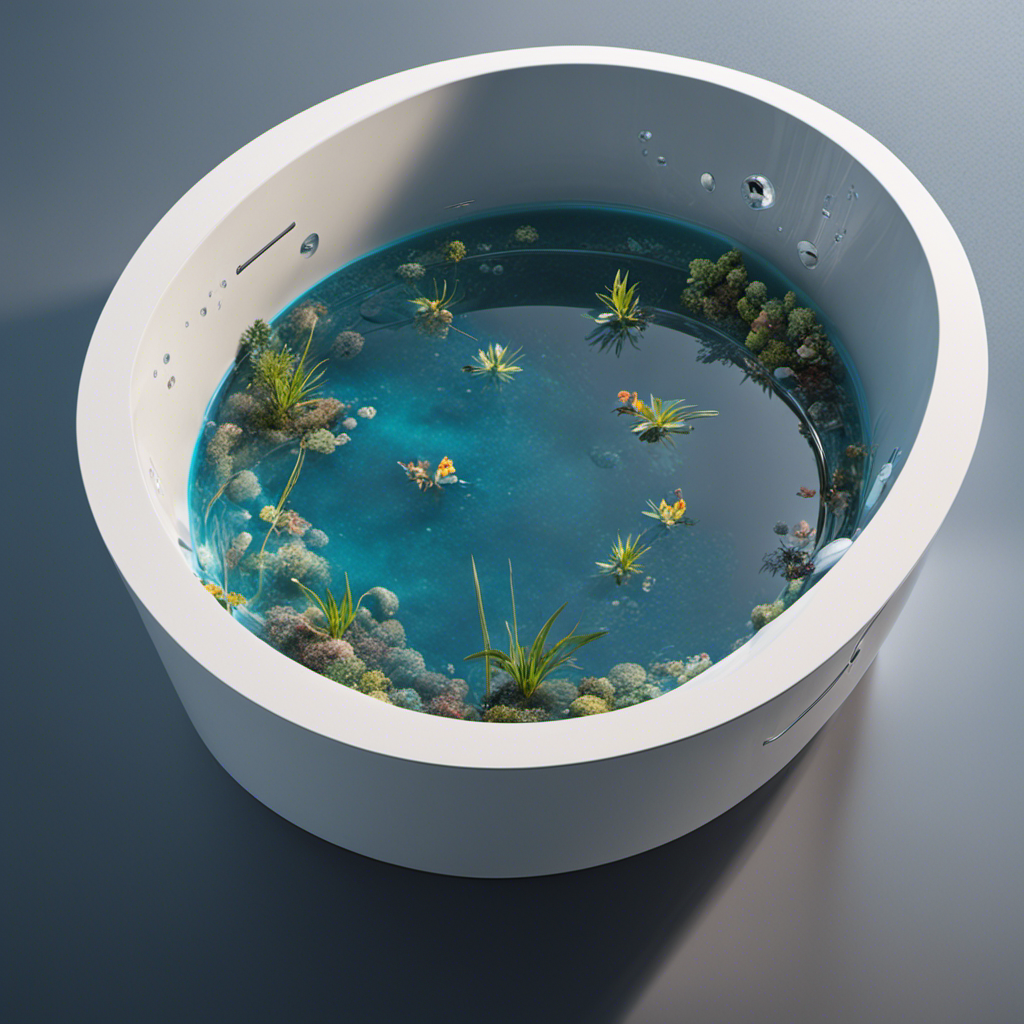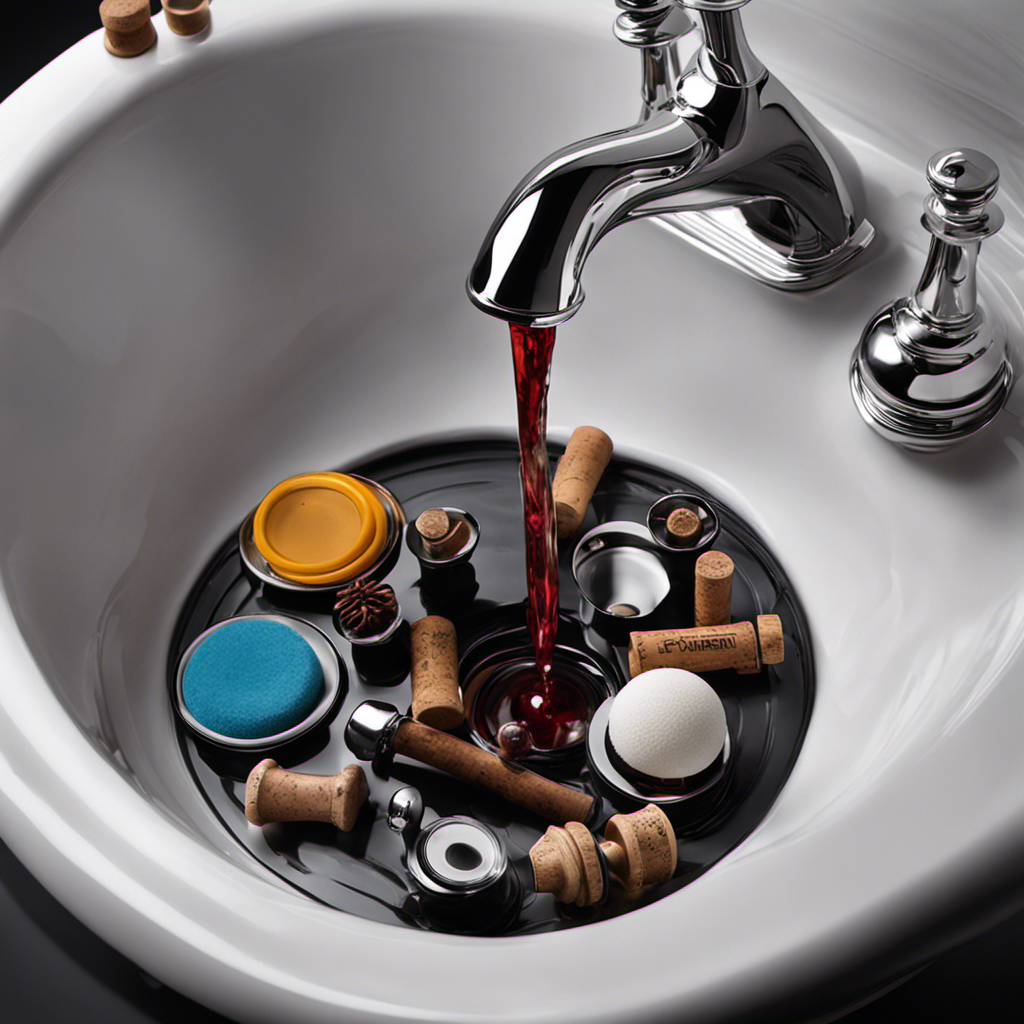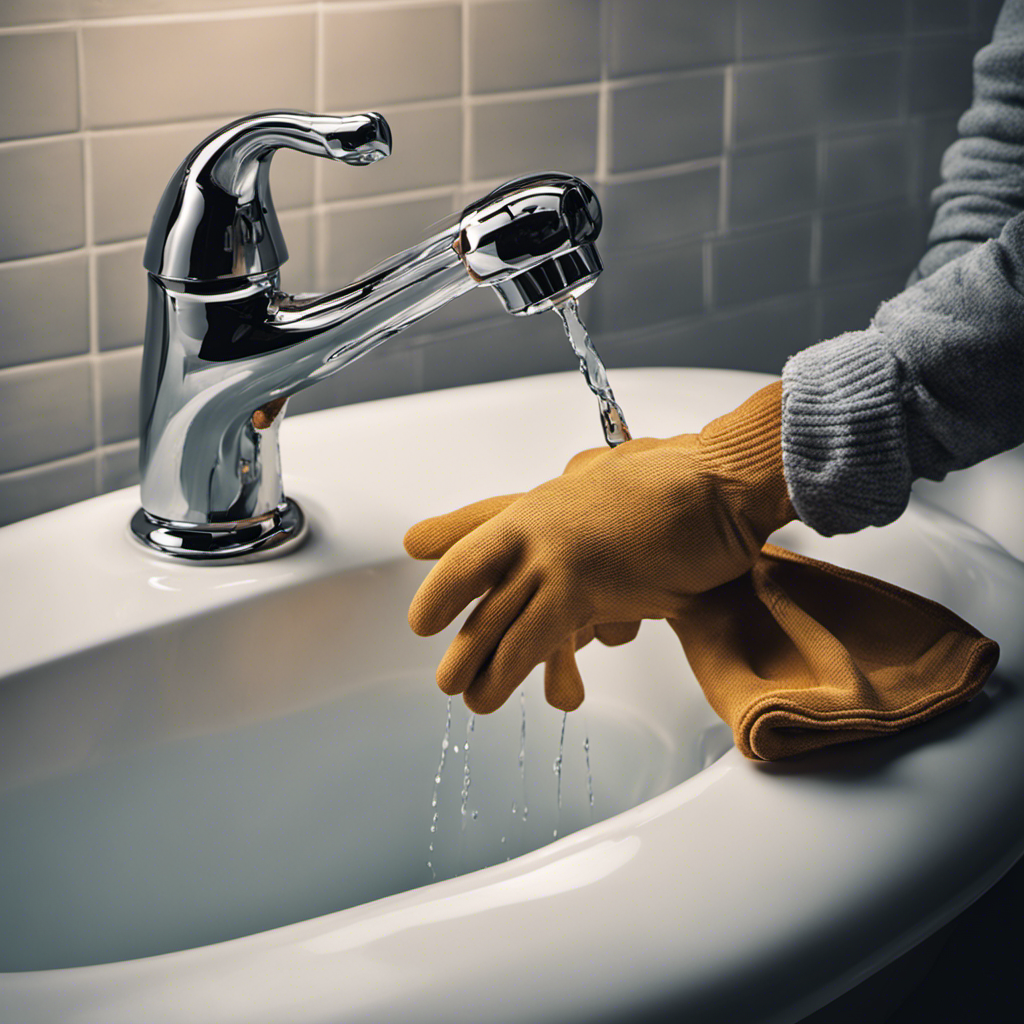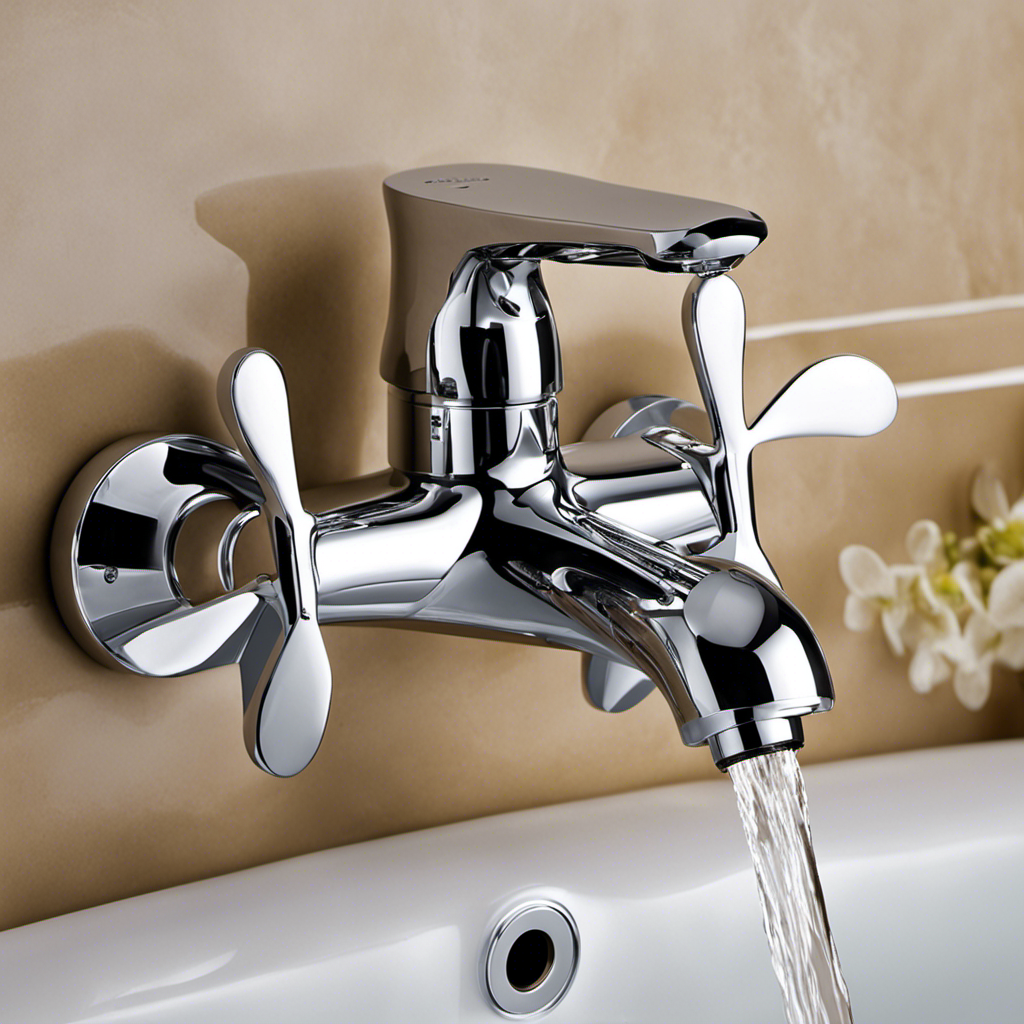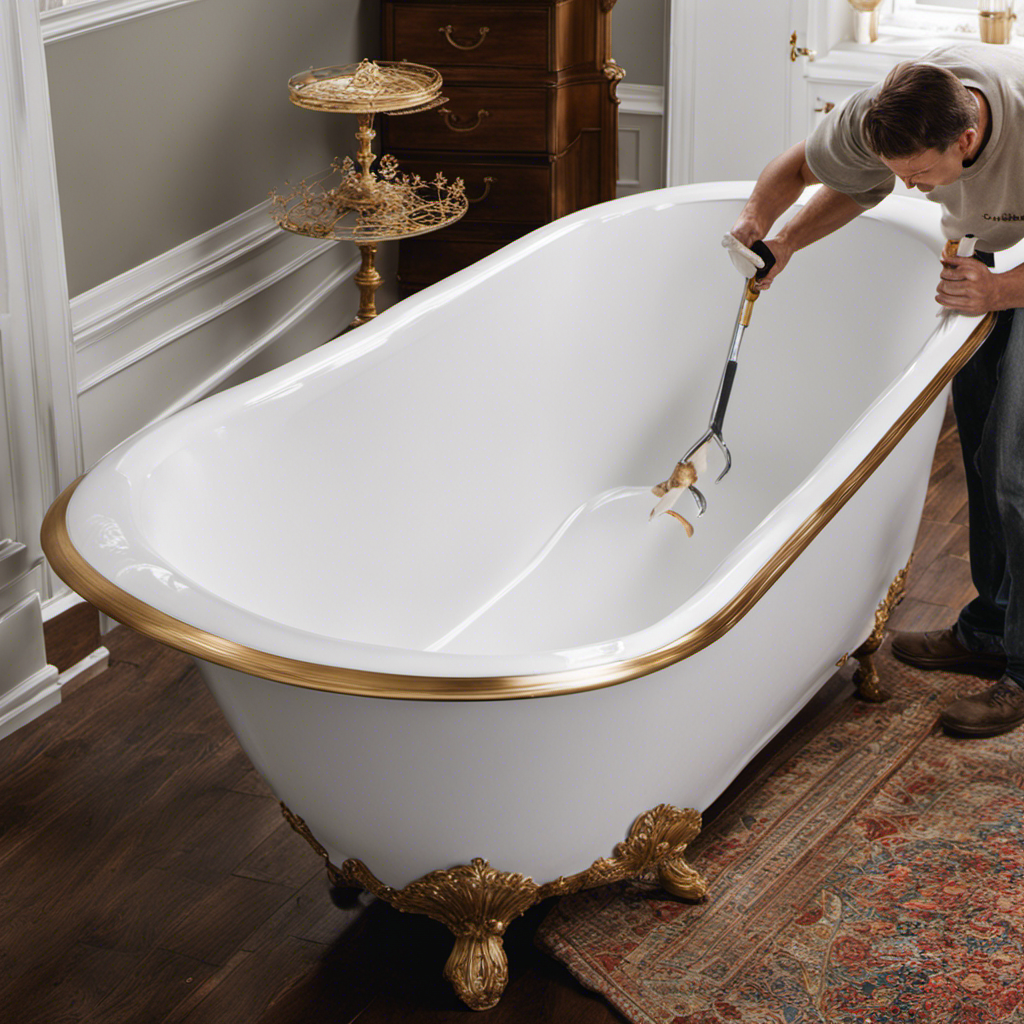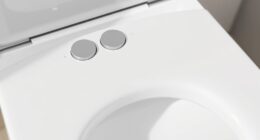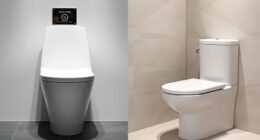So, here’s the deal: my bathtub has been dripping incessantly and it’s driving me crazy. I mean, who wants to deal with a constant leak, right?
Well, lucky for you, I’ve done some digging and I’m here to share the scoop on why your bathtub might be dripping too. In this article, we’ll explore the common causes, signs to look out for, and even some DIY fixes you can try.
So, buckle up and let’s get to the bottom of this dripping situation!
Key Takeaways
- Common causes of bathtub dripping include a worn-out or faulty faucet washer, damaged seal, loose or damaged pipe connections, and a corroded valve seat.
- Signs and symptoms of a dripping bathtub include water pooling around the base of the tub, stains or discoloration on the ceiling or walls below the bathroom, decreased water pressure, higher water bills, and potential damage to the home’s structural integrity.
- To identify the source of the dripping, one can check for visible leaks in pipes and connections, look for water pooling around the base or underneath the tub, listen for a constant dripping sound from the faucet or showerhead, inspect pipes for cracks or loose connections, and turn off the water supply to see if the dripping stops.
- DIY fixes for a dripping bathtub include tightening loose connections, replacing worn-out washers, checking and replacing faulty O-rings, repairing or replacing corroded valve seats, and applying plumber’s tape to threaded connections.
Common Causes of Bathtub Dripping
One of the most common causes of a dripping bathtub is a worn-out or faulty faucet washer. When the washer becomes worn or damaged, it fails to create a proper seal, allowing water to leak out and drip from the faucet. This not only leads to annoying dripping sounds, but it can also result in water damage if left unaddressed.
Water damage prevention is crucial to avoid costly repairs and potential health hazards caused by mold and mildew. Additionally, a dripping bathtub can have a significant impact on water bills, wasting gallons of water over time. It is essential to address this issue promptly to save both water and money.
Now, let’s explore the signs and symptoms of a dripping bathtub.
Signs and Symptoms of a Dripping Bathtub
If you notice water leaking from your tub, it’s likely due to a drip or small leak. Here are some common signs and symptoms to look out for:
-
Water pooling around the base of the bathtub: This is a clear indication that there is a leak somewhere in the tub or its plumbing system.
-
Stains or discoloration on the ceiling or walls below the bathroom: This suggests that water is seeping through the floor or walls, causing potential damage to the structural integrity of your home.
-
Decreased water pressure: A dripping bathtub can lead to reduced water pressure, making it harder to take a satisfying shower or fill the tub quickly.
-
Higher water bills: If your water usage has increased unexpectedly, it could be a result of a dripping bathtub that is wasting water.
Ignoring a dripping bathtub can lead to potential damage, such as mold growth, rotting wood, and even structural issues. It’s essential to address the problem promptly to prevent further complications.
How to Identify the Source of the Dripping
To identify the source of the dripping, you can start by checking the pipes and connections for any visible leaks. One common sign of a dripping bathtub is water pooling around the base or underneath the tub. This could indicate a problem with the plumbing system.
Another sign is a constant dripping sound coming from the faucet or showerhead. This could suggest a faulty valve or worn-out washer. Troubleshooting methods include inspecting the pipes for any cracks or loose connections. Additionally, you can turn off the water supply to the bathtub and observe if the dripping stops. If it does, the issue may lie within the faucet or valve.
DIY Fixes for a Dripping Bathtub
To fix the dripping in your bathtub, start by tightening any loose connections you find in the pipes or faucet.
Here are four DIY fixes for a dripping bathtub:
-
Replace the washer: A worn-out washer can cause leaks. Turn off the water supply, remove the faucet handle, and replace the washer inside.
-
Check the O-rings: If the dripping persists, faulty O-rings could be the culprit. Remove the faucet handle and replace any damaged O-rings.
-
Repair the valve seat: A worn or corroded valve seat can lead to leaks. Use a valve seat wrench to remove the old seat and replace it with a new one.
-
Apply plumber’s tape: If the dripping persists, wrap plumber’s tape around the threaded connections to create a watertight seal.
When to Call a Professional for Bathtub Dripping Issues
When dealing with persistent leaks in your bathtub, it may be time to consider calling a professional for assistance. Regular bathtub maintenance is crucial to prevent potential water damage caused by a dripping bathtub.
As a homeowner, it is important to understand that a leaking bathtub can lead to more significant issues if left untreated. Water damage can occur in the surrounding walls, floors, and even the foundation of your home.
A professional plumber has the expertise and tools necessary to accurately diagnose the source of the leak and provide the most appropriate solution. They can also ensure that the repair is done correctly, preventing further damage and potential costly repairs in the future.
Don’t overlook the importance of regular maintenance or hesitate to seek professional help when needed to avoid extensive water damage to your home.
Conclusion
In conclusion, a dripping bathtub is not just a minor annoyance; it can be a sign of a larger issue that needs to be addressed.
The common causes of bathtub dripping range from worn-out washers to faulty valves.
By identifying the source of the dripping and utilizing DIY fixes, you can prevent further damage and save money.
However, if the problem persists or becomes more complex, it is crucial to call a professional for assistance.
Don’t let a dripping bathtub turn into a cascading disaster, take action and fix it now.
